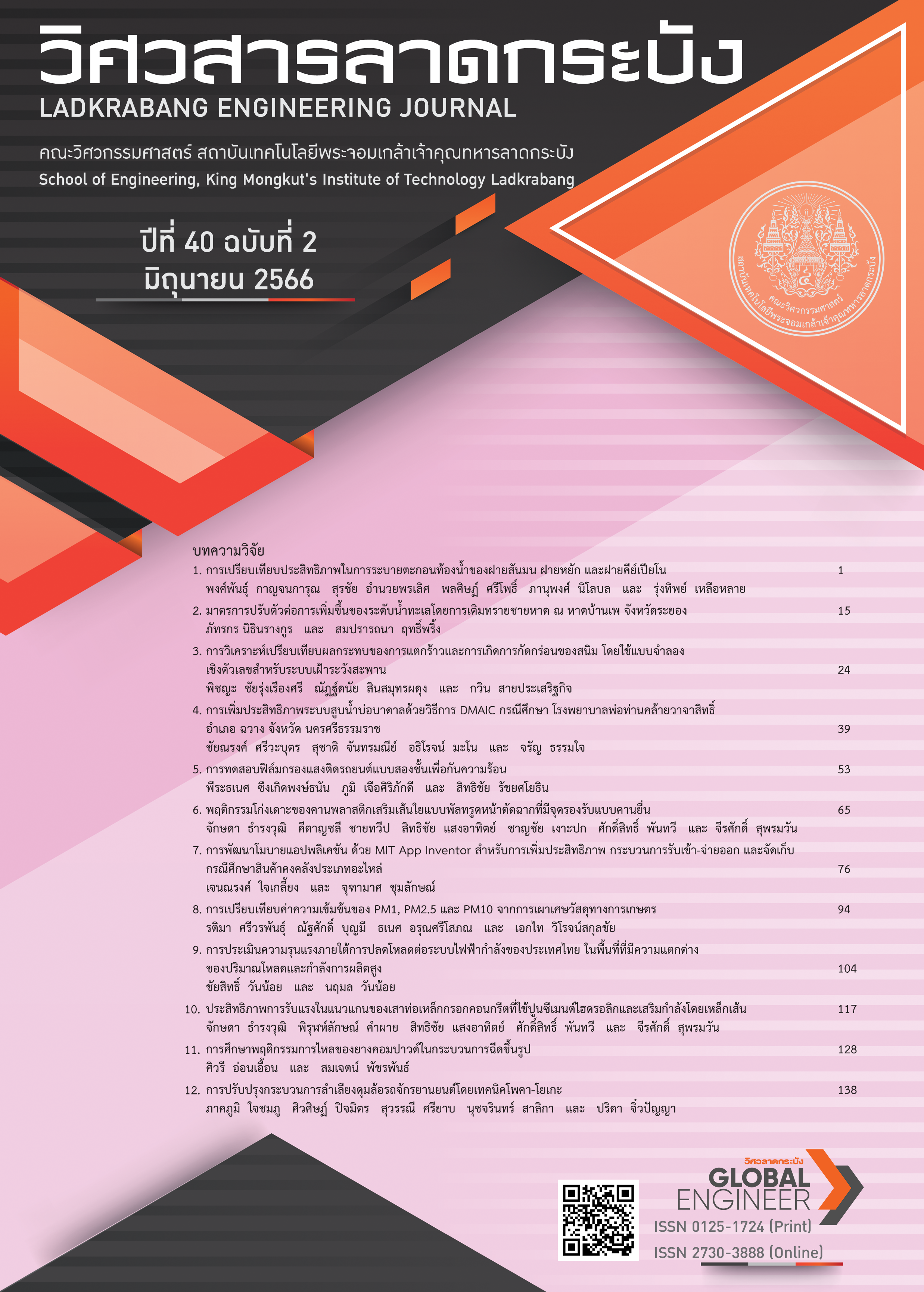Comparison of Bedload Drainage Efficiency of Ogee Weir, Labyrinth Weir and Piano Key Weir
Keywords:
Sediment transport, Weir, Sediment deposition, Physical modelAbstract
The problem of sedimentation in upstream weirs occurs in most weirs that perpendicularly sited on flow direction. One of the solutions to reduce this problem is to design the weir in such a way that the sediment can easily flow away under the force of the water flowing over the weir. In this paper, a comparison of bedload drainage efficiency of Ogee weir, Labyrinth weir, and Piano Key weir is presented. The physical model was used to simulate bedload transport through the weir with and without sediment discharge gate. The suitability of using a weir depends on the sediment deposition characteristics of the bedload at the upstream weir, the typical of sediment discharge through the weir, and the volumetric ratio of the bedload discharge. The results of this study show that the Labyrinth weir and the Piano Key weir have the best efficiency in discharging sediment through a weir with and without a sediment discharge gate respectively. The shape of the Piano Key weir allows the sediment to be easily flushed out by the force of the water. While the Labyrinth weir accumulate a lot of sediment inside the weir, the sediment can be discharge when the sediment discharge gate is opened. The Piano Key weir is suitable for rivers where no sediment discharge gate is installed. In rivers where a sediment discharge gate can be installed, the Labyrinth weir should mainly used.
References
P. Plangoen, S. Tiaotoi and S. Mueangthong, “Effects of land use and climate change on erosion of the Upper Yom Basin,” Chulachomklao Royal Military Academy Journal, vol. 13, no. 1, pp. 65–78, 2015.
P. Phalaphananawi, “The Principles for calculating the discharge of water through irrigation regulator,” Royal Irrigation Department, Bangkok, Thailand, 2011. [Online]. Available: http://water.rid.go.th/waterm/template/manager/FProjectMAC/O&MQA/65/a/9/9.4.pdf
J. Herbst, M. Gebhardt, J. Merkel, F. Belzner, and C. Thorenz, “Sediment transport over labyrinth weirs,” in Proc. 7th International Symposium on Hydraulic Structure, Aachen, Germany, May 15–18, 2018, doi: 10.15142/T3XP91.
C. Sindelar, J. Schobesberger and H. Habersack, “Effects of weir height and reservoir widening on sediment continuity at run-of-river hydropower plants in gravel bed rivers,” Geomorphology, vol. 291, pp. 106–115, 2017, doi: /10.1016/j.geomorph. .2016.07.007
Hydraulics design of Labyrinth weir, S. Choonhawat, Accessed: Oct. 23, 2022. [Online]. Available:https://engfanatic.tumcivil.com/tumcivil_1/content/upload/File/KromYotha/Labyrinth.pdf.
M. Noseda, I. Stojnic, M. Pfister and A. J. Schleiss, “Upstream erosion and sediment passage at piano key weirs,” Journal of Hydraulic Engineering, vol. 145, no. 8, 2019, doi: 10.1061/(ASCE)HY.1943-7900.0001616
J. M. Ribi, B. Spahni, D. Dorthe and M. Pfister, “Piano Key Weir as overflow on sedimentation basin of wastewater treatment plant,” in Proc. 3rd International Workshop on Labyrinth and Piano Key Weirs (PKW 2017), Qui Nhon, Vietnam, Feb. 22–24, 2017, pp. 175–184, doi: 10.1201/9781315169064-25.
F. L. Bremer and M. Oertel “Numerical uncertainty of piano key weir discharge coefficient estimations by means of 3D CFD modelling-a preliminary study,” in Proc. 7th International Symposium on Hydraulic Structure, Aachen, Germany, May 15–18, 2018, doi: 10.15142/T39W7R.
P. Blanc and F. Lempérière, “Labyrinth spillways have a promising future,” International Journal on Hydropower and Dams, vol. 8, no. 4, pp. 129–131, 2001.
F. Lempérière and A. Ouamane, “The piano key weir: a new cost-effective solution for spillways,” Hydropower & Dams, vol. 10, no. 5, pp. 144–149, 2003.
F. Laugier, “Design and construction of the first Piano Key Weir (PKW) spillway at the Goulours dam,” Hydropower & Dams, vol. 13, no. 5, pp. 94–101, 2007.
J. Pralong, J. Vermeulen, B. Blancher, F. Laugier, S. Erpicum, O. Machiels, M. Pirotton, J. L. Boillat, M. L. Ribeiro and A. Schleiss, “A naming convention for the Piano Key weirs geometrical parameters,” in Proc. 1st International Workshop on Labyrinth and Piano Key Weirs (PKW 2011), Liege, Belgium, Feb. 9–11, 2011.
A. Shields, “Application of similarity principles and turbulence research to bed-load movement,” The Prussian Research Institute for Hydraulic Engineering, Berlin, Germany, Rep. 1338, 1936.
M. S. Yalin, “Similarity in Sediment Transport,” in Theory of Hydraulic Models, 1st ed., London, Britain: Red Globe Press, 1971, ch. 6, sec. 6.5, pp. 145-186.
Downloads
Published
How to Cite
Issue
Section
License
Copyright (c) 2023 Faculty of Engineering, King Mongkut’s Institute of Technology Ladkrabang

This work is licensed under a Creative Commons Attribution-NonCommercial-NoDerivatives 4.0 International License.
The published articles are copyrighted by the School of Engineering, King Mongkut's Institute of Technology Ladkrabang.
The statements contained in each article in this academic journal are the personal opinions of each author and are not related to King Mongkut's Institute of Technology Ladkrabang and other faculty members in the institute.
Responsibility for all elements of each article belongs to each author; If there are any mistakes, each author is solely responsible for his own articles.






